Execution of an ALLOCATE statement for a pointer causes the pointer to become associated with the target allocated For an allocatable object, the object becomes definable The number of dimensions specified (ie, the number of upper bounds in allocation) must be equal to the rank of allocate_objectWhen an ALLOCATE statement is executed for an array, the values of theDeallocate(a) This is really only an option in the main program If you allocate an array within a subroutine or function but return without deallocating an array, the array becomes "undefined", and the Fortran 90 doesn't guarantee you can retrieve the contents on reentry to the subprogramFortran's allocatable variables are automatically deallocated when the variable goes out of scope Additionally, allocating and deallocating memory takes time so it is not advisable to repeatedly allocate and deallocate an array unless there is a good reason to do so Finally, as you mentioned, the operating system will reclaim all memory

Fortran 41 Programs With Arbitrary Sized Arrays Using Allocate Deallocate Statements Youtube
Fortran allocate deallocate
Fortran allocate deallocate-•CUDA Fortran is the Fortran analog to CUDA C – Allocate memory on host and device – Transfer data from host to device – Execute kernel (device computation) deallocate(a) end program incTest CUDA Fortran program incTest use cudafor useThe STAT= option Immediately before deallocation, allocated () returns True As I understand it, STAT= should cause the deallocation to return control to the program, even if it failed;




Solved Allocatable Character Problem Intel Community
Fortran 90 Free Form, ISO Standard, Array operations Fortran 95 Pure and Elemental Procedures Fortran 03 Object Oriented Programming Fortran 08 CoArrays Examples Installation or Setup Fortran is a language which can be compiled using compilers supplied by many vendors DifferentQuerying the KdTree After the tree is initialized, a search class can be used to perform search for the nearest neighbour, the k nearest neighbours, all neighbours within a radius, k nearest within a radius, and items within upper and lower bounds in each dimension error #6724 An allocate/deallocate object must have the ALLOCATABLE or POINTER attribute I have to use the code in comment lines, but that makes the code redundant Gfortran compiles and runs the same code Thank you!
Your code requires both the deallocate and the nullify (at least to be clean) That's because you have 2 separate things the allocatable and a pointer to it You need the deallocate to deallocate the allocatable But that will only deallocate the allocatablePurpose The ALLOCATABLE attribute allows you to declare an allocatable object You can dynamically allocate the storage space of these objects by executing an ALLOCATE statement or by a derivedtype assignment statement If the object is an array, it is a deferredshape array or an assumedrank arrayFortran is designed to be much more explicit than that The allocate and deallocate statements explicitly indicate what they do without nonobvious additional functions, like allocate also performing a combined deallocate and allocate on an already allocated
Successful execution of a DEALLOCATE statement causes the allocation status of an allocatable object to become not allocated Fortran 03 An object being deallocated will be finalized first When a variable of derived type is deallocated, any allocated subobject with the ALLOCATABLE attribute is also deallocatedAsk about the status when "the allocation is sucessful" I maintain that the value of iostat is required to be zero when "the allocation is sucessful" You are just pointing out that the allocation being sucessful doesn't necessarily mean that there is enough memory I can accept that interpretation, but Since r9, backtrace when configured with enablechecking=yes $ cat z1f90 program p integer, allocatable x() integer stat allocate (x(2), stat=stat) deallocate (x,




Requirements For Fortran 03 Procedures And Progress David



Pgroup Com
Intel® Fortran Compiler Classic and Intel® Fortran Compiler (Beta) Developer Guide and Reference Developer Guide and Reference Version 212Now the array assignments may allocate, reallocate, or deallocate the lefthand side arrays depending on the allocation status and size of the righthand side expressions If the device code allocates or reallocates device memory, the present table is no longer valid When exiting the compute construct, the host would not know where the data toSometimes clear memory means to set it to zero In Fortran you do that with an assignment statement For an array you can use a DO loop, or in newer Fortran versions array assignment If you mean deallocate that should be the deallocate statement glen




Allocate Multiple Arrays With Single Shape Stack Overflow




Intel Fortran Compiler For Linux And Macos
ALLOCATE ( A(N) ) where N is an integer variable that has been previously assigned To ensure that enough memory is available to allocate space for your array, make use of the STAT option of the ALLOCATE command ALLOCATE ( A(N), STAT = AllocateStatus) IF (AllocateStatus /= 0) STOP "*** Not enough memory ***"Fortran 90 Dynamic Memory The size of arrays can now be specified at run time Here's how a typical Fortran 77 program would manage an array whose size could vary at run time integer inmax parameter (inmax=100) real*8 array (inmax) !1 Don't assume any relationship between the Delphi and Fortran allocation schemes If you allocated memory in Delphi, don't try to deallocate that in Fortran And vise versa 2 Likewise don't assume any relationships between the pointers I wouldn't count on being able to convert a Delphi pointer into a Fortran pointer or vise versa



1




Solved Allocatable Character Problem Intel Community
The DEALLOCATE statement deallocates allocatable arrays and pointer targets and disassociates pointers Syntax DEALLOCATE ( objectlist , STAT=statvariable) Where objectlist is a commaseparated list of pointers or allocatable arrays statvariable is a scalar INTEGER variable that returns a status value RemarksThat is, that it is not possible to segfault in deallocate () This is happening under absoft f90 in linux The machine is a dual The ALLOCATE statement and ALLOCATABLE type qualifier are features introduced in Fortran 90 They allow arrays whose size is determined at run time rather than at compile time In a nutshell, ALLOCATABLE is used as part of a type declaration to tell the compiler that the size of the array will be determined later, as the program runs




Fortran Wikipedia




Ppt Fortran 90 95 And 00 Powerpoint Presentation Free Download Id
So check it has not been allocated first if (not allocated (foo)) then allocate (bar (10, 2)) end if Once a variable is no longer needed, it can be deallocated deallocate (foo) If for some reason an allocate statement fails, the program will stopAllocate_object is a data pointer or an allocatable object stat_variable is a scalar integer variable Successful execution of a DEALLOCATE statement causes the allocation status of an allocatable object to become not allocated An object being deallocated will be finalized first When a variable of derived type is deallocated,It is an error to allocate an array twice !




Sync All In Fortran



Personalpages Manchester Ac Uk
Standardconforming Fortran 95 programs should use ALLOCATE and DEALLOCATE statements on ALLOCATABLE arrays to perform dynamic memory management, and not make direct calls to malloc/realloc/free Legacy Fortran 77 programs could use malloc()/malloc64() to assign values to Craystyle POINTER variables, which have the same data representation as INTEGER variablesThe ALLOCATE statement dynamically creates storage for array variables having the ALLOCATABLE or POINTER attribute If the object of an ALLOCATE statement is a pointer, execution of the ALLOCATE statement causes the pointer to become associated If the object of an ALLOCATE statement is an array, the ALLOCATE statement defines the shape of theCall deallocate() explicitly for 'a' before calling allocate() (in current Fortran)?




C Pointer Trickery To Allow Mismatched Fortran Array Ranks Stack Overflow




Img011 Gif
Fortran provides two ways to allocate memory dynamically for arrays Array variable has an ALLOCATABLE (or POINTER) attribute, and memory is allocated through the ALLOCATE statement, and freed through DEALLOCATE The overhead of using ALLOCATE and DEALLOCATE is the same as the overhead of using malloc () and free () in C Actually most Fortran compilers implement (DE)ALLOCATE as wrappers around malloc ()/free () with some added bookkeeping, inherent to all Fortran 90 arrays This idea was originally proposed a few months back on CLF b someone else so I'm echoing it here Add an optional deallocate/reallocate logical argument to ALLOCATE to tell it to check allocation status of any variable in its allocate
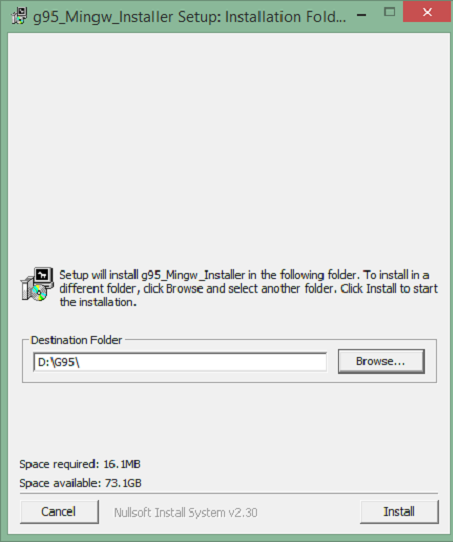



Fortran Overview



Osti Gov
* resolvec (resolve_allocate_expr) Add F08 notify and flag indicating source driven array spec (resolve_allocate_deallocate) Check for source driven array spec, when array to allocate has no explicit array spec * transarrayc (gfc_array_init_size) Get lower and upper bound from a tree array descriptor, except when the source expression It looks like it works, but it may not be the most efficient, so not likely what you want to use if performance matters It appears we allocate the space on the device, allocate a temp on the host, move the "uninitialized" data from device back to the host temp, copy the src data to the host temp, then copy it back to the device, and delete the host temp That explains the warning915 ALLOCATED — Status of an allocatable entity Description ALLOCATED(ARRAY) and ALLOCATED(SCALAR) check the allocation status of ARRAY and SCALAR, respectively Standard Fortran 90 and later Note, the SCALAR= keyword and allocatable scalar entities are available in Fortran 03 and later Class Inquiry function Syntax
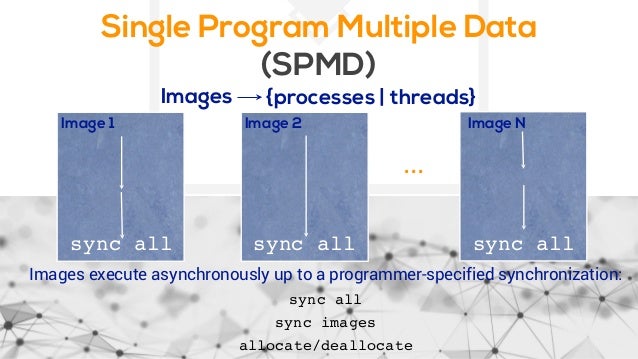



First Experiences With Parallel Application Development In Fortran
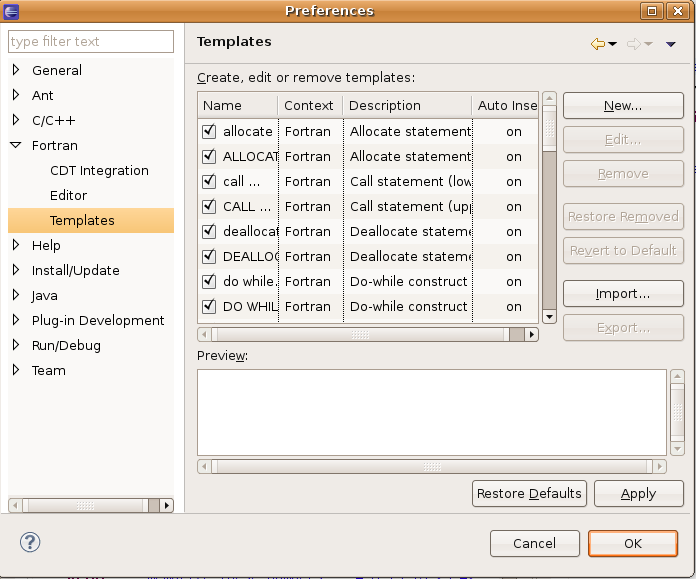



Ptp Photran Documentation Photran7 Eclipsepedia
Fortran 95 Allocatable Arrays = n 9 PRINT *, buffer(n) 10 DEALLOCATE( buffer, STAT=status) 11 END (dbx) stop at 6 (2) stop at "alloc 1000 Unknown size at line 6 stopped in main at line 6 in file "allocf95" 6 ALLOCATE( buffer(n), STAT=status ) (dbx)> allocate/deallocate them, thus preventing users from modularizing this However, no such restrictions apply to pointers, and you can generally do the fundamental to Fortran than to C (and even more so to f90 than they were to f77) If REALLOCATE is defined in Fortran, it will certainly need to apply toThe only way to allocate aligned memory in standard Fortran is to allocate it with an external C function, like the fftw_alloc_real and fftw_alloc_complex functions Fortunately, Fortran 03 provides a simple way to associate such allocated memory with a standard Fortran array pointer that you can then use normally




Generic Programming In Fortran 90 Acm Sigplan Fortran Forum




Storage Bindings Allocation Is The Process By Which The Memory Cell Or Collection Of Memory Cells Is Assigned To A Variable These Cells Are Taken From Ppt Download
The DEALLOCATE statement frees space previously allocated for allocatable arrays and pointer targets These statements give the user the ability to manage space dynamically at execution time Examples COMPLEX, POINTER HERMITIAN (, ) !For new code using Fortran 95 pointers, the memory deallocation intrinsic is DEALLOCATE The type shall be INTEGER It represents the location of the memory that should be deallocated See MALLOC for an exampleStat_variable A scalar integer variable errmsg_variable (Fortran 03) A scalar character variable source_expr (Fortran 03) An expression which is scalar or has the same rank as allocate_object i_d_type_spec (Fortran 03) Is an intrinsic_type_spec or derived_type_specSee Type Declaration for a list of possible type specifications




Modernizing Modularizing Fortran Codes With 03 Standards



Osti Gov
If an Allocate or Deallocate statement fails and there is no STAT= keyword, the Fortran International Standard requires the program to crash right then and there Thus, a careful programmer will always include the STAT= keyword in the Allocate or Deallocate statementComplex array pointer READ *, M, N ALLOCATE ( HERMITIAN (M, N) ) DEALLOCATE (HERMITIAN, STAT = IERR7)The rank of the array, ie, the dimensions has to be mentioned however, to allocate memory to such an array, you use the allocate function allocate ( darray(s1,s2) ) After the array is used, in the program, the memory created should be freed using the
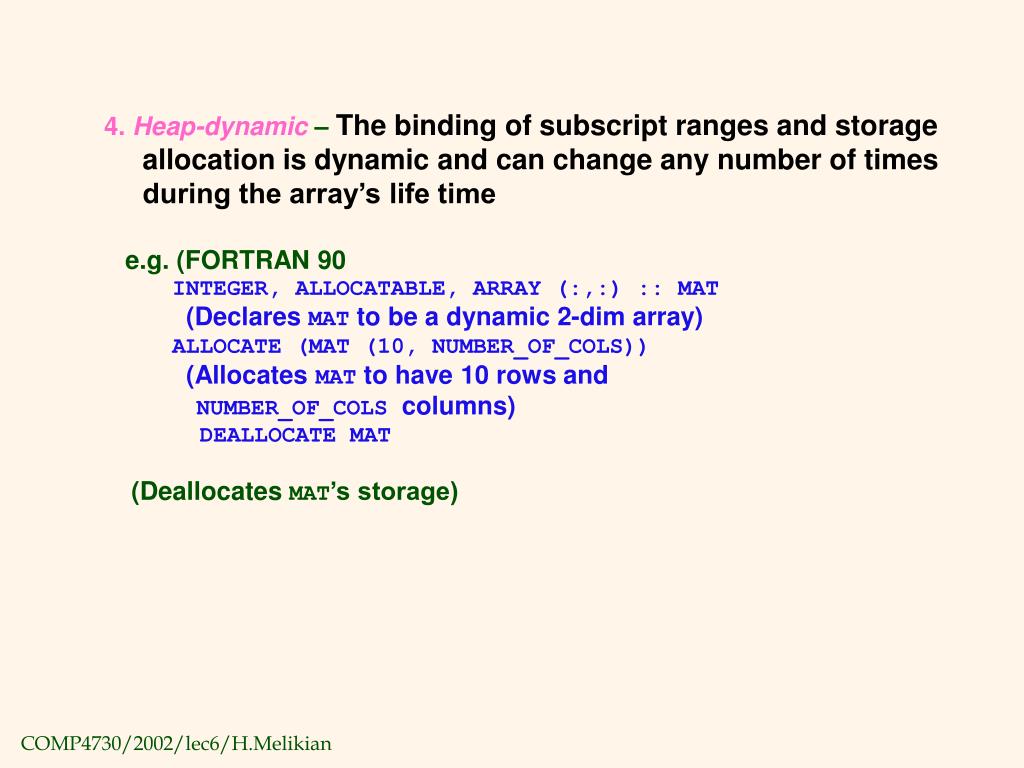



Ppt Data Types Powerpoint Presentation Free Download Id
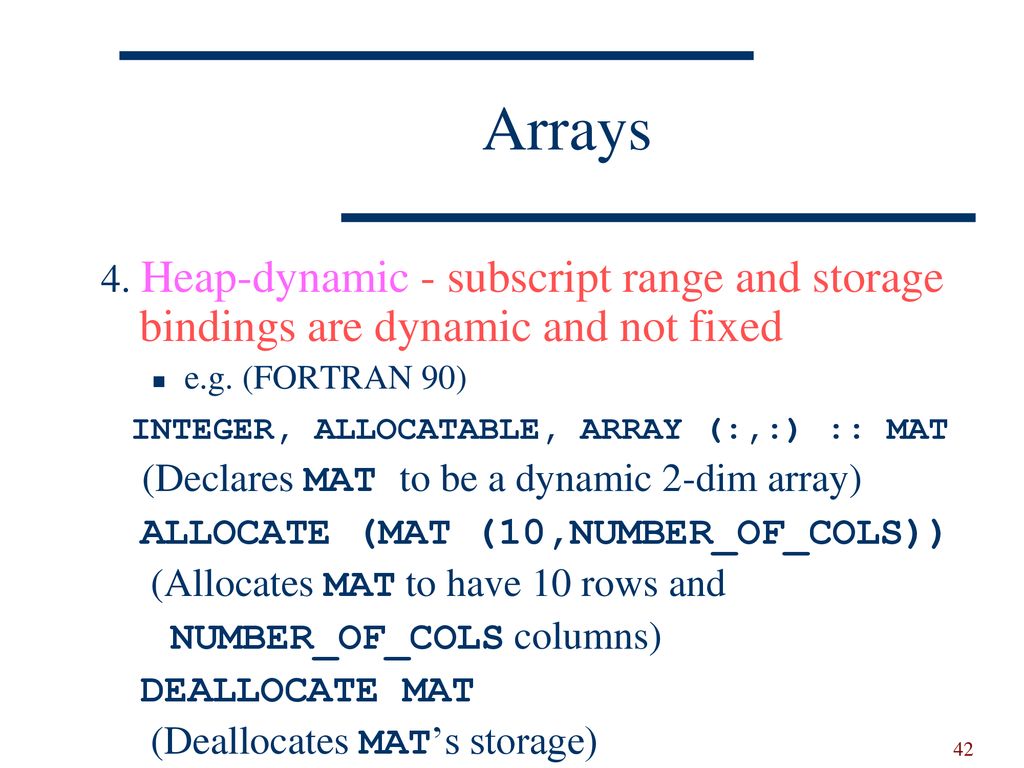



Chapter 6 Data Types Ppt Download



Wg5 Fortran Org




Numerical Recipes In Fortran 90 Pdf Astrophysics And Neutrino
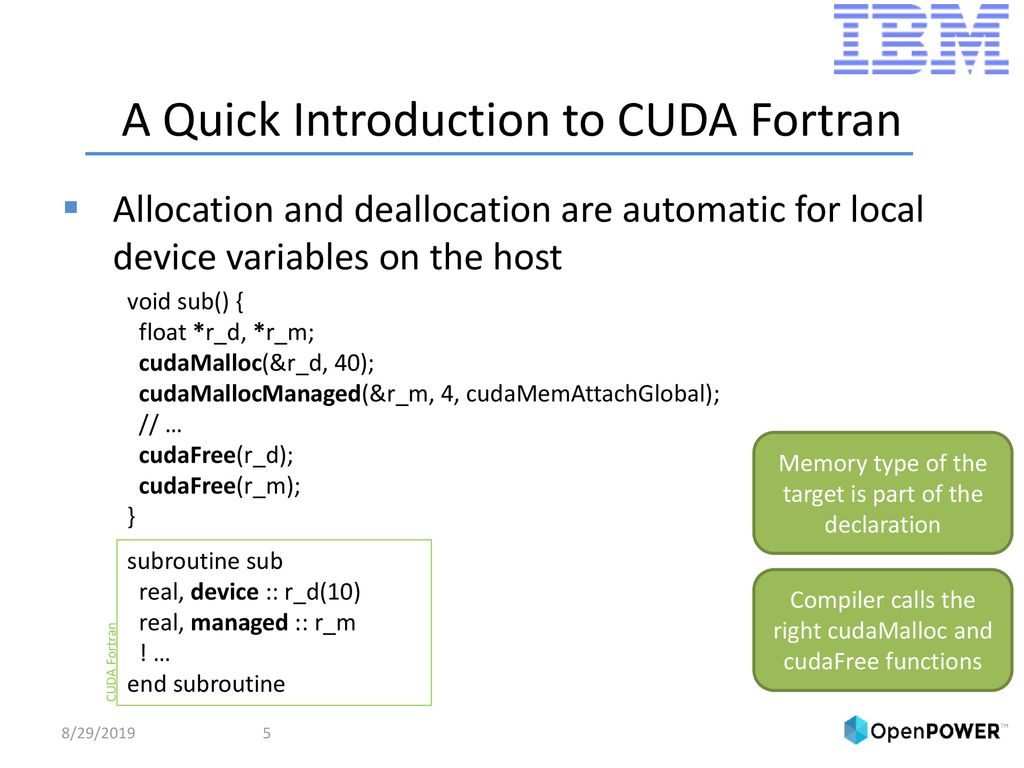



Cuda Fortran Programming With The Ibm Xl Fortran Compiler Ppt Download




Gpu Memory Allocation And Deallocation Speed Legacy Pgi Compilers Nvidia Developer Forums




Fortran 41 Programs With Arbitrary Sized Arrays Using Allocate Deallocate Statements Youtube




Ppt Fortran 90 Powerpoint Presentation Free Download Id



Github Sbai7 Farlib Fortran Array Collection Library




Fortran Basics Pdf Document



Www Star St And Ac Uk




Fortran An Overview Sciencedirect Topics




Doc Lecture1 Anju Sabharwal Academia Edu



Fortran Json Python Degenerate Conic



Software Intel Com
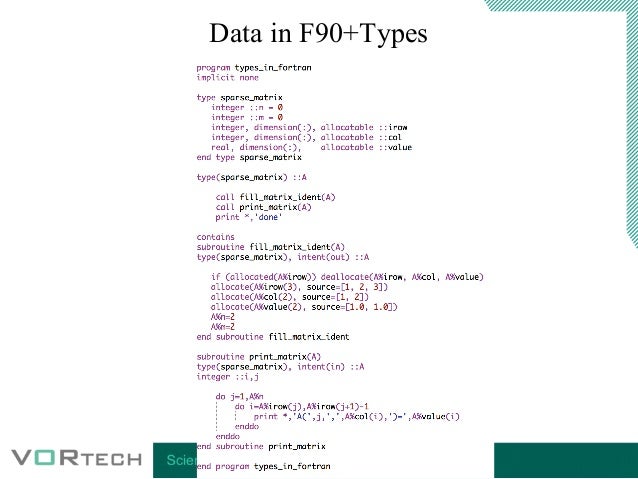



Introduction Modern Fortran Short



Pointer Computer Programming Wikipedia




Why Does A Subroutine With An Array From A Use Module Statement Give Faster Performance Than The Same Subroutine A Locally Sized Array Stack Overflow




Introduction To Cuda Fortran Youtube




Pdf Memory Leak Detection In Fortran Applications Using Tau




Parallel Programming With Fortran 08 And 18 Coarrays



Object Oriented Programming Via Fortran 90 Emerald Insight



1



Rcs Manchester Ac Uk
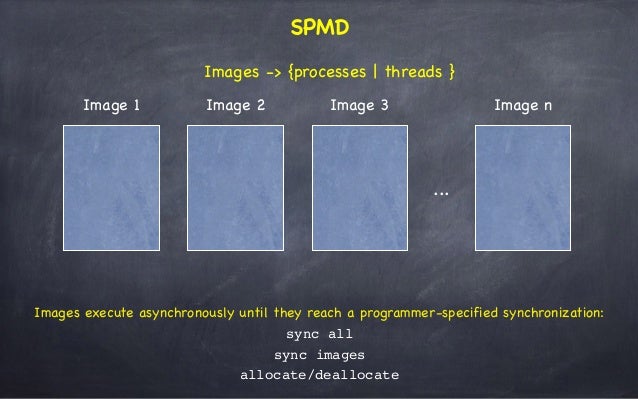



Towards Exascale Computing With Fortran 15




Ss 4068 Fortran Programming



Add Deallocate Reallocate Option To Allocate Issue 61 J3 Fortran Fortran Proposals Github




Modernizing Modularizing Fortran Codes With 03 Standards




The Fortran 90 Programming Language Book Chapter Iopscience



Www Users York Ac Uk




Advanced Data Management Sciencedirect




Walking Randomly Fortran




Shadow Object Interface Between Fortran 95 And C
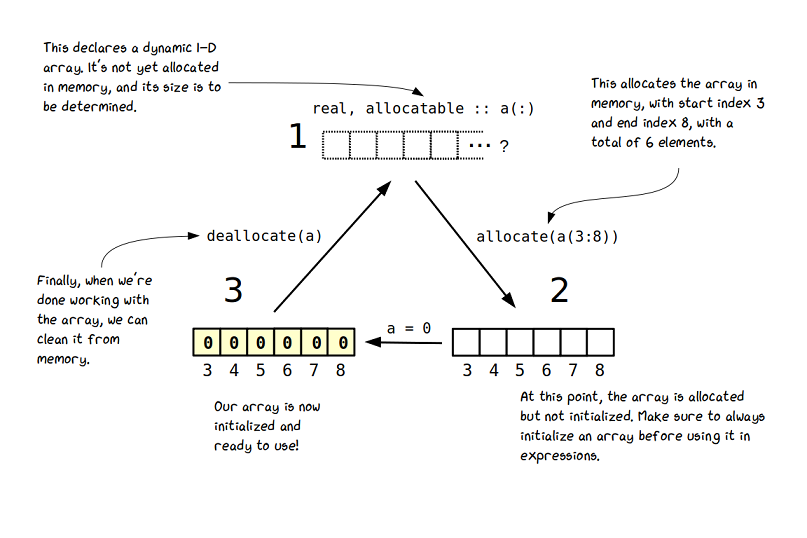



5 Analyzing Time Series Data With Arrays Modern Fortran Building Efficient Parallel Applications




Introduction To Fortran 90 Pointer Variables Qub




Data Types Chapter 6 Data Types Lectures 11 Topics Introduction Primitive Data Types Character String Types Array Types Associative Arrays Record Ppt Download




Mpi To Coarray Fortran Experiences With A Cfd Solver For Unstructured Meshes
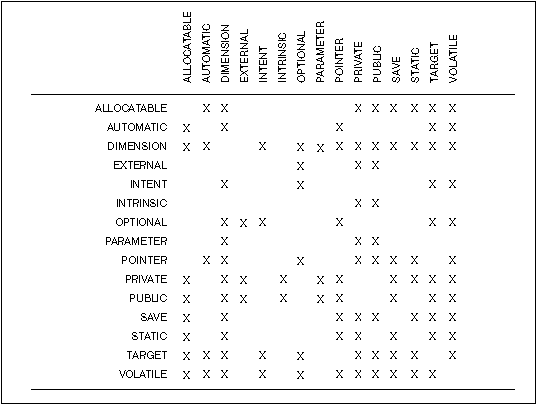



Language Reference
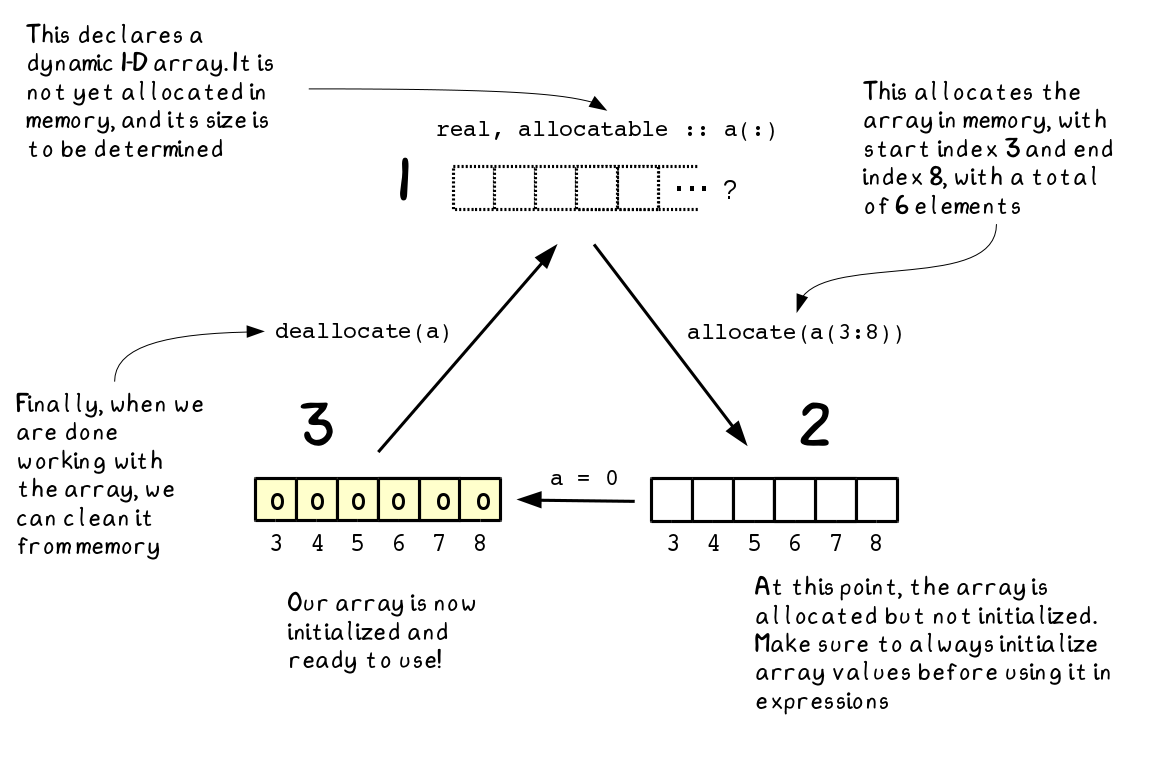



Analyzing Stock Price Time Series With Modern Fortran Part 2 By Milan Curcic Modern Fortran Medium



Github Victorsndvg Fpl Fortran Parameter List A Fortran Dictionary Where To Put The Parameters Of Your Application




Fortran Structures Pointers
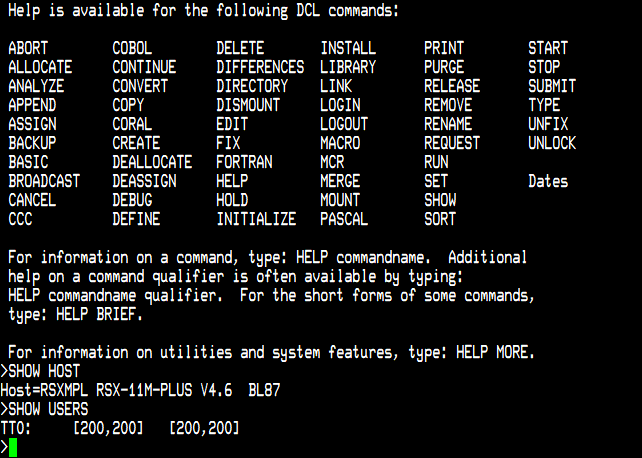



File Rsx 11m Plus Png Wikipedia



1
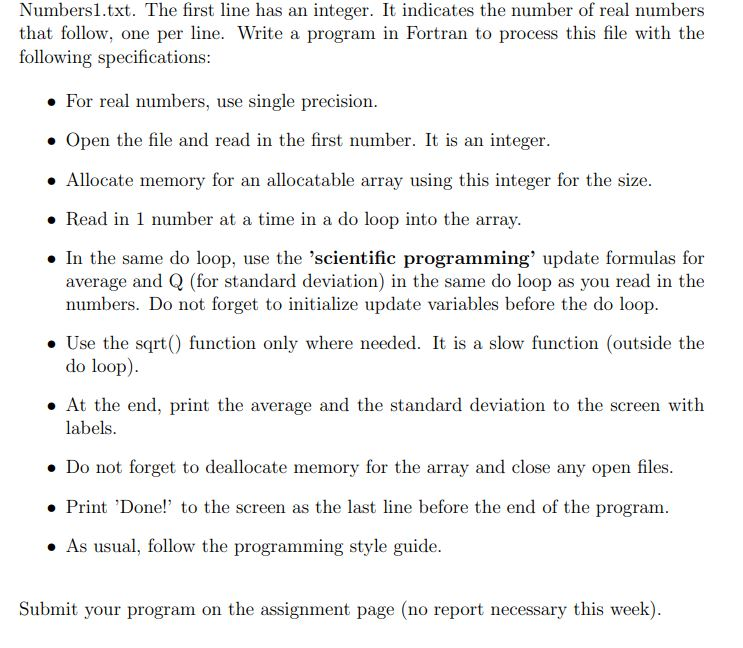



Could You Help Me To Solve This Question Using Chegg Com




Analyzing Stock Price Time Series With Modern Fortran Part 2 Milan Curcic




Epcc S Advanced Computing Facility Archer In A Nutshell Semantic Scholar




Example Of Fortran Code And Device Variable Point Wise Expression Download Scientific Diagram




Program Fortran 90 Implementing The Quick Sort Algorithm Download Scientific Diagram



Math Utk Edu




Introduction To Fortran Serial Programming A Simple Example



Nce Ads Uga Edu




Introduction To Fortran Serial Programming A Simple Example




Storage Allocation Mechanisms Module 12 2 Cop 40



Pascal Programming Language



Odnature Naturalsciences Be



Msi Umn Edu
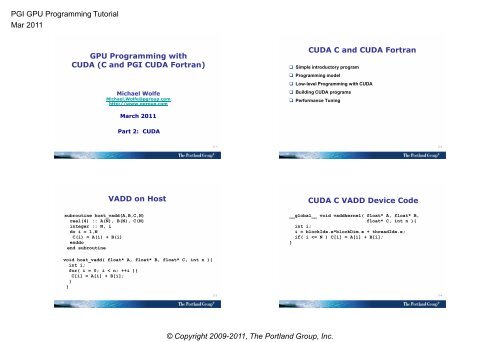



Gpu Programming With Cuda And The Pgi Accelerator



Www2 Southeastern Edu




Sc16 Preview Modernizing Modularizing Fortran Codes




Write Function In Fortran Stack Overflow



Pgroup Com




Table 1 From Alias Analysis Of Pointers In Pascal And Fortran 90 Dependence Analysis Between Pointer References Semantic Scholar




Fortran Dynamic Arrays



Ibm Com



Ieee Hpec Org




The Fortran 90 Programming Language Book Chapter Iopscience




Fortran 41 Programs With Arbitrary Sized Arrays Using Allocate Deallocate Statements Youtube



Materials Prace Ri Eu



It Uu Se
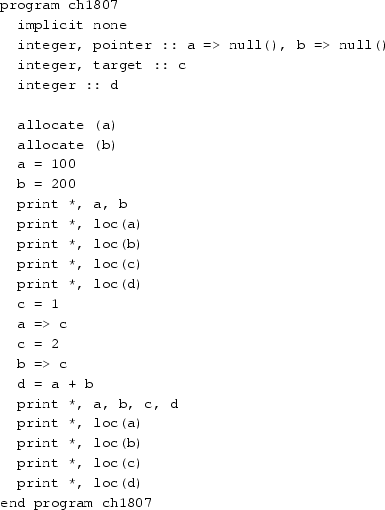



An Introduction To Pointers Springerlink




Fortran History And Development



Tutorialspoint Com



Ftp Numerical Rl Ac Uk



Wg5 Fortran Org



Wg5 Fortran Org



Object Oriented Programming Via Fortran 90 Emerald Insight
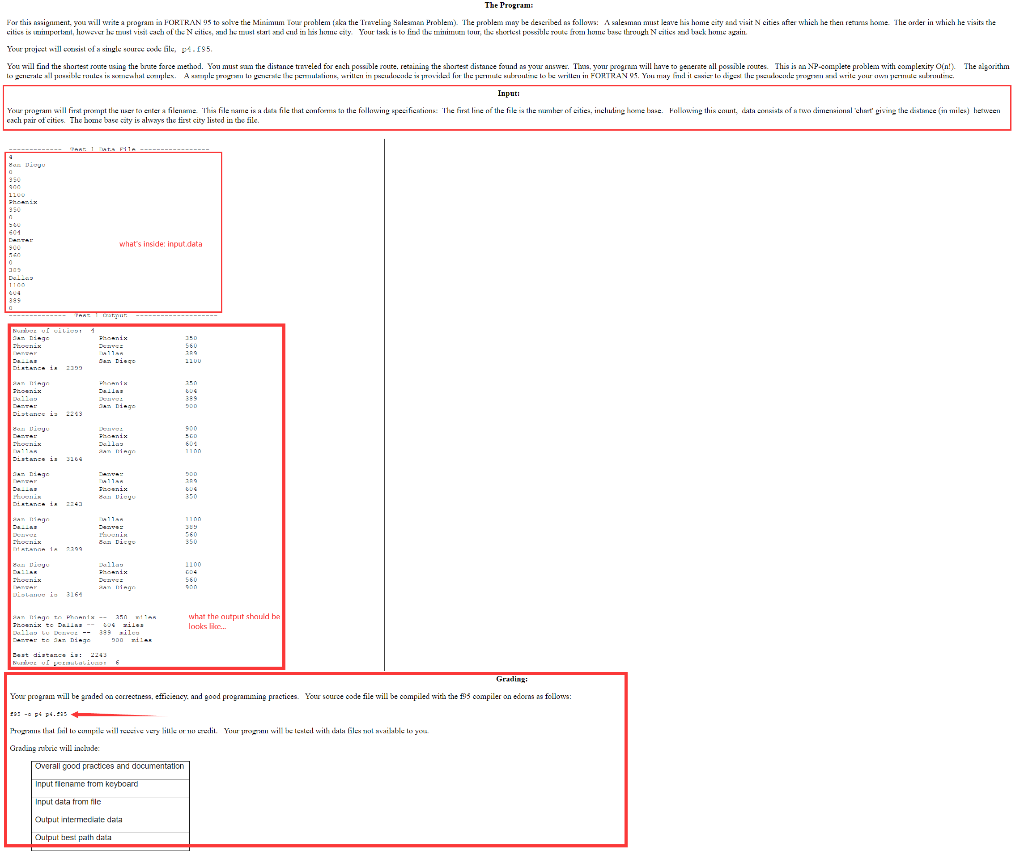



Hey Fortran 95 I Got Some Issues With My Codes Chegg Com




The Fortran 90 Programming Language Book Chapter Iopscience



Can A Dynamically Allocated Memory Created In One Function Be Freed In Another Function Quora




Pdf Avoiding Memory Leaks With Derived Types




Executable Binary File An Overview Sciencedirect Topics




Fortran 90 Performance Problems Acm Sigplan Fortran Forum



Pages Mtu Edu




Pgi Fortran Reference



0 件のコメント:
コメントを投稿